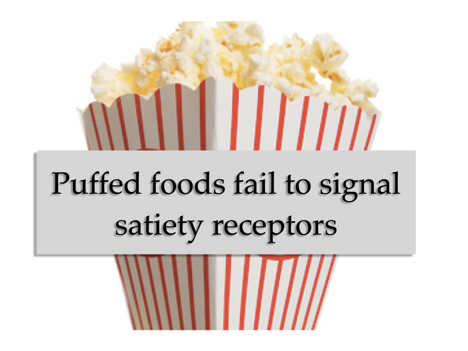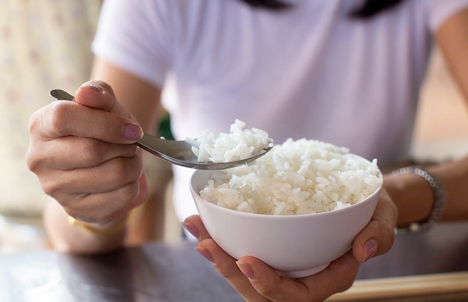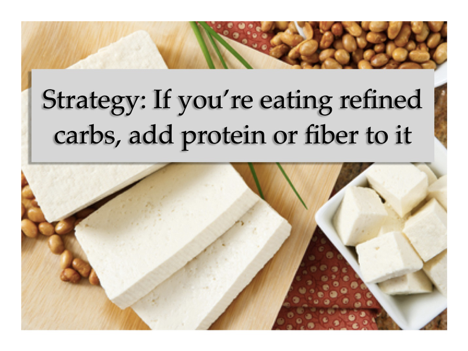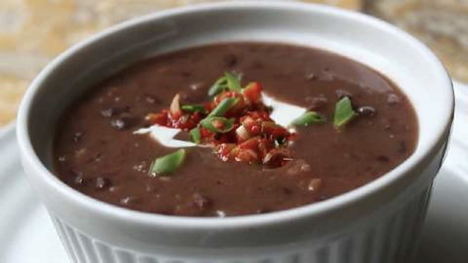2020 Can be the Year of Permanent Weight Loss IF You Ask the Right Question and Avoid these 5 Things!
Did you know that overeating is not necessarily a personal choice? Science shows that hunger can be a hormonally driven behavior, artificially stimulated by thoughts and from environmental triggers.
For example, stimulation from thoughts resulting from: smelling food, seeing food, or just thinking about food. This can make you feel “hungry” even when there is no biological need for food. It’s called “false hunger.” Then there’s the other hormonally driven hunger behavior known as “emotional hunger.” This refers to a drive to eat to find pleasure or relief from unpleasant or painful thoughts and feelings.

Both “hungers” are at the base of overeating. Weight loss coaches agree and all tend to ask the same very probing question regarding what feeds (pardon the pun) this false and emotional hunger: “WHAT are you trying to numb or avoid dealing with by eating?”
When you ask and answer that question, and then pair that information with staying away from these 5 environmental triggers, you’re on your way to a year of permanent weight loss!
AVOID puffed foods (including cereal and popcorn): They’re higher in calories than advertised; puffing (making the food softer) lowers the cost of digestion. Puffed foods also fail to signal satiety receptors in the stomach. That’s why we can eat a bucket of popcorn or handfuls of cereal and not feel “stuffed.” For example, it is very easy to eat 2 handfuls of cereal (about 200 calories) without feeling too full, but you would definitely feel full after eating 2 apples (also about 200 calories).

AVOID maltodextrin: Maltodextrin, a food additive, is in e-v-e-r-y-t-h-i-n-g today. It spikes blood glucose (more than regular sugar), harms gut bacteria, and changes hunger levels. Research shows that the more humans injest maltodextrin, the more it’s liked and wanted. Read labels and stay away from it.

AVOID introducing new flavors after you’ve eaten: Research on sensory-specific satiety explains why we almost always have “room for dessert.” A new flavor experience is exciting and creates anticipation which re-triggers appetite. Research also suggests that we have different satiation thresholds for different flavors; every time you start with a new food or flavor, you “reset” the feeling of satisfaction. This adds clarity to why we will eat dessert, even when stuffed, and how we can over-eat at buffets. Additional food choices after a meal drive increased consumption and the variety decreases satiety.

AVOID SOS combinations: The combination of SUGAR, OIL (fat), and SALT is treacherously addictive. This is because "the sweet taste" is the most powerful of all the tastes. A a taste ‘enhancer,’ it takes something that’s normally not palatable or revolting on its own (e.g. pure fat, or a bitter taste) and makes it delicious. Sugar itself also seduces the reward pathway in your brain. This brain hijacking is terrifying!
AND, just the feel of fat on the tongue (no swallowing required) triggers a response in the brain’s reward center. Today, fat is everywhere, in everything, so watch out.
AVOID Refined foods that don’t contain protein: Refined and processed foods fail to stretch the stomach (Fail #1 leading to overeating) and they also don’t trigger those appetite-suppressing peptides (Fail #2 leading to overeating) because they lack protein. (Protein is a big trigger for peptides—a great appetite suppressant).

HOWEVER, protein isn’t always needed. Carbohydrates are satiating, too, if they contain fiber. For example, a potato (which doesn’t have much protein) is incredibly satiating because of its fiber. Ideally, you want protein and fiber (aka whole foods). Protein + fiber is the best combination for physical satiety and satiation. So, you can partly fix things when eating refined stuff by eating fiber or protein along with it (if eating white rice, add tofu or beans to this, for example).

I hope you find this information encouraging. I’ll close with a recipe that’s excellent at providing satiety and protection from environmental triggers. And may 2020 be the year you achieve your weight and good health goals!

Serving size: 6
Calories per serving: 335
Ingredients:
1 large onion chopped
6 cloves (large) garlic chopped
4 (15-ounce) cans no-salt, or low-sodium black beans undrained
3 to 4 cups chopped tomatoes
4 cups no-salt or low-sodium vegetable broth
4 cups finely chopped kale, l
1 tablespoon cumin
1 teaspoon dried oregano
1/8 teaspoon black pepper
1/8 teaspoon hot pepper flakes or to taste
2 tablespoons fresh lime juice
1 ripe avocado chopped
Directions:
Add Recipe to Cook'n
For example, stimulation from thoughts resulting from: smelling food, seeing food, or just thinking about food. This can make you feel “hungry” even when there is no biological need for food. It’s called “false hunger.” Then there’s the other hormonally driven hunger behavior known as “emotional hunger.” This refers to a drive to eat to find pleasure or relief from unpleasant or painful thoughts and feelings.

Both “hungers” are at the base of overeating. Weight loss coaches agree and all tend to ask the same very probing question regarding what feeds (pardon the pun) this false and emotional hunger: “WHAT are you trying to numb or avoid dealing with by eating?”
When you ask and answer that question, and then pair that information with staying away from these 5 environmental triggers, you’re on your way to a year of permanent weight loss!
AVOID puffed foods (including cereal and popcorn): They’re higher in calories than advertised; puffing (making the food softer) lowers the cost of digestion. Puffed foods also fail to signal satiety receptors in the stomach. That’s why we can eat a bucket of popcorn or handfuls of cereal and not feel “stuffed.” For example, it is very easy to eat 2 handfuls of cereal (about 200 calories) without feeling too full, but you would definitely feel full after eating 2 apples (also about 200 calories).

AVOID maltodextrin: Maltodextrin, a food additive, is in e-v-e-r-y-t-h-i-n-g today. It spikes blood glucose (more than regular sugar), harms gut bacteria, and changes hunger levels. Research shows that the more humans injest maltodextrin, the more it’s liked and wanted. Read labels and stay away from it.

AVOID introducing new flavors after you’ve eaten: Research on sensory-specific satiety explains why we almost always have “room for dessert.” A new flavor experience is exciting and creates anticipation which re-triggers appetite. Research also suggests that we have different satiation thresholds for different flavors; every time you start with a new food or flavor, you “reset” the feeling of satisfaction. This adds clarity to why we will eat dessert, even when stuffed, and how we can over-eat at buffets. Additional food choices after a meal drive increased consumption and the variety decreases satiety.

AVOID SOS combinations: The combination of SUGAR, OIL (fat), and SALT is treacherously addictive. This is because "the sweet taste" is the most powerful of all the tastes. A a taste ‘enhancer,’ it takes something that’s normally not palatable or revolting on its own (e.g. pure fat, or a bitter taste) and makes it delicious. Sugar itself also seduces the reward pathway in your brain. This brain hijacking is terrifying!
AND, just the feel of fat on the tongue (no swallowing required) triggers a response in the brain’s reward center. Today, fat is everywhere, in everything, so watch out.
AVOID Refined foods that don’t contain protein: Refined and processed foods fail to stretch the stomach (Fail #1 leading to overeating) and they also don’t trigger those appetite-suppressing peptides (Fail #2 leading to overeating) because they lack protein. (Protein is a big trigger for peptides—a great appetite suppressant).

HOWEVER, protein isn’t always needed. Carbohydrates are satiating, too, if they contain fiber. For example, a potato (which doesn’t have much protein) is incredibly satiating because of its fiber. Ideally, you want protein and fiber (aka whole foods). Protein + fiber is the best combination for physical satiety and satiation. So, you can partly fix things when eating refined stuff by eating fiber or protein along with it (if eating white rice, add tofu or beans to this, for example).

I hope you find this information encouraging. I’ll close with a recipe that’s excellent at providing satiety and protection from environmental triggers. And may 2020 be the year you achieve your weight and good health goals!

Simple Black Bean Soup
Serving size: 6
Calories per serving: 335
1 large onion chopped
6 cloves (large) garlic chopped
4 (15-ounce) cans no-salt, or low-sodium black beans undrained
3 to 4 cups chopped tomatoes
4 cups no-salt or low-sodium vegetable broth
4 cups finely chopped kale, l
1 tablespoon cumin
1 teaspoon dried oregano
1/8 teaspoon black pepper
1/8 teaspoon hot pepper flakes or to taste
2 tablespoons fresh lime juice
1 ripe avocado chopped
Directions:
In large soup pot, heat 2 tablespoons water; water saute onion until tender. Add garlic; cook for another minute, adding more water if needed. Add black beans and their liquid, tomatoes, vegetable broth, kale, spices; bring to boil. Reduce heat to simmer; cook 25 minutes.
Transfer about 6 cups of soup to a blender; puree. Return to pot (or use immersion blender to partially blend soup right in pot). Bring soup to desired temperature; add lime juice. Serve topped with chopped avocado.
Transfer about 6 cups of soup to a blender; puree. Return to pot (or use immersion blender to partially blend soup right in pot). Bring soup to desired temperature; add lime juice. Serve topped with chopped avocado.
Recipe formatted with the Cook'n Recipe Software from DVO Enterprises.
Sources:
- www.seriouseats.com
- www.happyherbivore.com
- www.mdvip.com
- www.istockphoto.com
- www.kissmyketo.com
- www.happyherbivore.com
- www.allrecipes.com
 Alice Osborne
Alice Osborne
Weekly Newsletter Contributor since 2006
Email the author! alice@dvo.com
